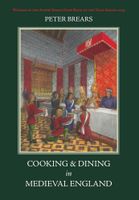Advertisement
The Bakehouse
Appears in
By Peter Brears
Published 2008
Bread probably formed the most substantial part of the medieval diet, being served at every meal. Not only did it provide a high level of nutrition combined with comforting, stomach-filling bulk, but it was also essential for the mannerly use of spoons and knives at table. Its other great advantage was its year-round availability. When harvested, dried and stored indoors, bread-corn would last from one year to the next, ready to be sent to the mill as required. In large households, it was stored in a granary, its regular transfer to the bakehouse being recorded by the clerks as it was carried out in either sacks or bushel measures. The use of chests or arks for the storage of grain and meal appears to be a later practice, medieval arks being almost exclusively used for the storage of clothing, linens or books in well-furnished chambers.

